In this article, we review the Topping E70 & L70 desktop DAC and AMP. Both devices are individually priced at $349 USD.
This review consists of 3 pages. The Topping E70 will be reviewed on page 1, the Topping L70 will be reviewed on page 2 and the joint performance of the two will be evaluated on page 3.
Disclaimer: ShenzhenAudio sent us the Topping E70 & L70 DAC/AMP stack for this review, free of charge. As always, I am here to convey my honest experience with the product.
Topping
Topping Electronics & Technology, known as ‘TOPPING’, is based in Guangzhou, China, and was established in 2008. They design some of the best DACs and AMPs when it comes to the price-to-performance ratio. They have a dedicated R&D team of skilled engineers and audiophiles. In addition to that, they are heavily invested in the latest audio testing machinery such as the APx555 from Audio Precision. Of course, all of this means one thing for us consumers, better devices!
I have used numerous Topping products in the past, the oldest two I remember are the TP30 and the NX1. The year was 2013 I believe. I never had any problems with their products despite using 30+ of them throughout the years. They have a really good track record and they strive to do better.
Today we are reviewing the E70. Based on Topping’s past nomenclature, it would not be wrong to say that this product belongs to Topping’s high-end segment. Topping’s line-up is growing each passing day with fantastic devices. If you want to check out more Topping gear, you can find all of our related reviews here.
Topping E70 High-End Balanced DAC
Yes, it’s high-end. Whether a product is high-end or not has never been about price. It was and always will be about performance. The E70 comes with an industry-rare DAC chip named ES9028PRO. The flagship-tier ES9028PRO features a 32-bit 8-channel HyperStream II architecture. In the E70 implementation, every 4 channels are connected in parallel as one channel.
Topping says that this configuration noticeably improves sound quality. Topping E70’s dedicated web page can be accessed through this link. The DAC is priced very competitively, and while this price band usually has trimmed-down products, Topping seems to have tried to offer maximum efficiency in terms of price-performance. The E70 costs $349 USD from ShenzhenAudio. It is offered in two colors; black and silver. Both of the colors come with anodized metallic paint.
The E70 also incorporates the latest technologies and improvements developed by Topping. Let’s take a look at the details. First of all, we see the first use of the new USB controller from XMOS. Called XU316, this 32-bit multicore controller replaces the long-running XU216. The plug-and-play feature, which allows the product to work seamlessly with all kinds of devices, has been further improved and offers maximum compatibility and stability with all devices except applications that require Windows-ASIO.
Furthermore, Topping states that they have designed a brand new I/ conversion circuit for the E70. This new circuit provides a lower distortion and lower noise while occupying less space on the board. If you remember our review of the Topping E50‘s particulars, you may have noticed that it doesn’t offer Bluetooth. The E70 has the LDAC support we’ve been waiting for and comes with Qualcomm’s QCC5125, a premium-tier chipset. It supports popular codecs such as LDAC, AptX HD, and AptX LL.
Here are the highlights:
- ESS ES9028PRO Flagship DAC
- XMOS XU316 USB Controller
- Qualcomm QCC5125 Bluetooth 5.1 Chipset with LDAC
- Remote Control Support
- USB-B / Coax / Optical / RCA / XLR
- XLR 4V/5V & RCA 2V/2.5V
- Improved Coaxial – Optical Inputs
- 32bit-768kHz PCM & DSD512 Support
- 12V Trigger (3.5mm)
- The latest DAC drivers can be found here.
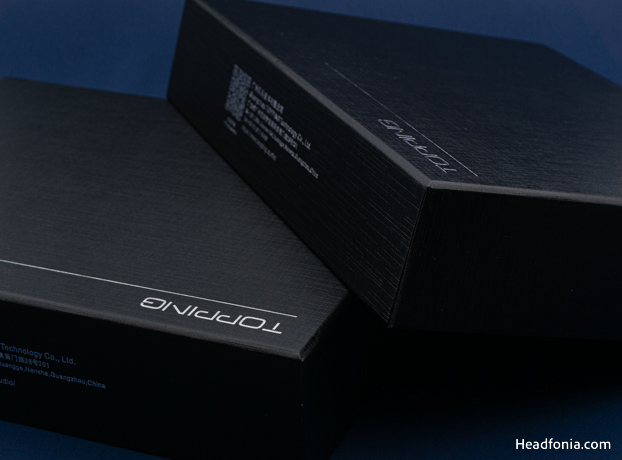
Packaging & Accessories
Topping has completely revamped the unboxing experience. The E70’s box is completely black. It has a textured finish with a crosshatch pattern, giving it a premium vibe. There are no product details or specifications anywhere on the box. The Topping brand name is on the front in silver letters and looks quite elegant. On the side of the box, there is the company’s address and a QR code, also in silver letters. Scanning this QR code takes you to the company’s website.
When you open the hardened cardboard box, you are no longer greeted by a compartment made entirely of foam. Instead, we see a more elegantly compartmentalized box layout, a mix of cardboard and dense foam. On the right is a large cardboard box containing the device’s IEC 13 power cable. At the top side, there is a smaller box containing the rest of the accessories that come with the device. The E70 comes with a remote controller, a BT antenna, and a USB-A to USB-B cable along with a couple of manuals.
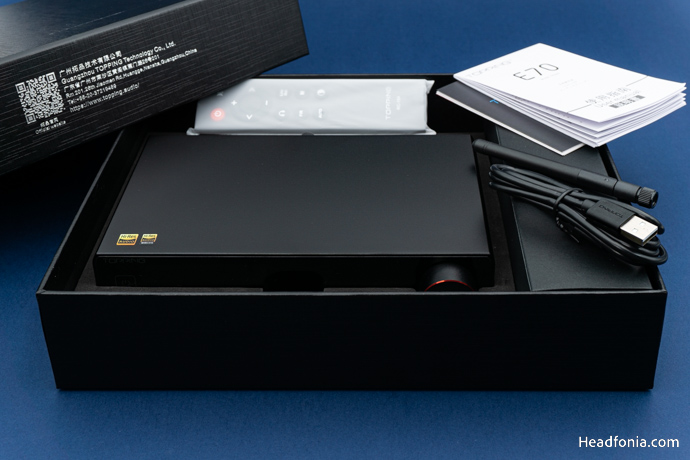
Design & Build Quality
Measuring 20 x 13.8 x 4.4 centimeters (WxDxH), the E70 DAC is not the most compact stack Topping has ever made, but it is smaller than its competitors, assuming it delivers high-end performance. The design of the E70 is similar to what we have already seen on the E30 II and E50, but the E70 has a wider form than those two devices. The DAC has a CNC-machined aluminum alloy chassis with a black glossy panel on the front.
All inputs and outputs are located on the back. Topping has used its usual anodized metallic paint on the E70 and like almost all other Topping devices, the device looks very elegant up close. The reason why we praise this paint so much is that it has a nice flaky shine under light and more importantly, provides excellent scratch resistance. Side note here, should any of our readers wish to carry it, the device weighs around 700 grams.
On the left side of the glossy front panel, right next to the power button, there is a white LED display. At first glance, the brightness of the screen is much brighter than Topping’s previous devices. The layout of the device is quite simple. Topping has placed a volume knob on the front and you can adjust the volume of the device in preamp mode via this knob. This knob can also be used for navigation, albeit limited. We’ll talk more about this in the controls & UI section.
Going back to the layout, we mentioned that there is a power button on the front of the device. A long press of this power button puts the device on standby and a short press changes the active input. All inputs and outputs of the device are located on the back. The device has unbalanced RCA and balanced XLR as outputs. The device features USB-B, optical and coaxial options as inputs.
The quality of the sockets used is great, as expected from Topping. The sockets seem rigid and durable with no wobble. I do not see any chassis imperfections that could’ve occurred during CNC and there are no assembly issues either. Topping has been quite consistent in this regard for a long time. As for the design; Topping could have offered the E70 with the oval design they introduced with the DX5, but that would probably have had a negative impact on the price. Maybe next time Topping will surprise us and give us a design update without bumping up the price, who knows?
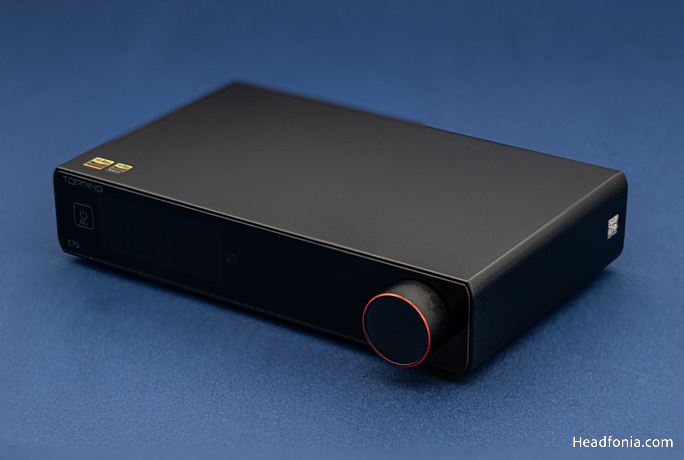
Controls & UI
The E70 can be controlled in 3 ways, but as with all Topping DACs, navigation is still controller-dependent. First of all, we mentioned that the power button on the front panel can be used to change the input, but it is also possible to change the active output via the volume knob. If you want to change the DAC’s modes, filters, and all other settings, you’ll need the help of the remote. Details of the controls can be downloaded here.
As with Topping’s other DACs, you need to access what Topping calls the “setup menu” to access important options such as changing the DAC mode. You can only access this menu when the device is switched off. With the device turned off, hold down the volume knob and turn the power switch on the back of the device to ON. Voila, you are in the setup menu.
In this menu, you can set the automatic power on and change the standby behavior, adjust display brightness, change the maximum output level at 0dBFS, set PCM filters, adjust channel balance, set pure DAC or preamp modes, and finally enable/disable the Bluetooth. When you are done adjusting the settings, press and hold the same button again and when you see 8-8 on the screen, it means that you have successfully saved the settings.
I recommend using the remote control for the setup menu as it is both easier and more practical. If anything goes wrong, the E70 has a rather odd factory reset procedure; in the standby state, turn the knob on the front counterclockwise until the display is fully illuminated.
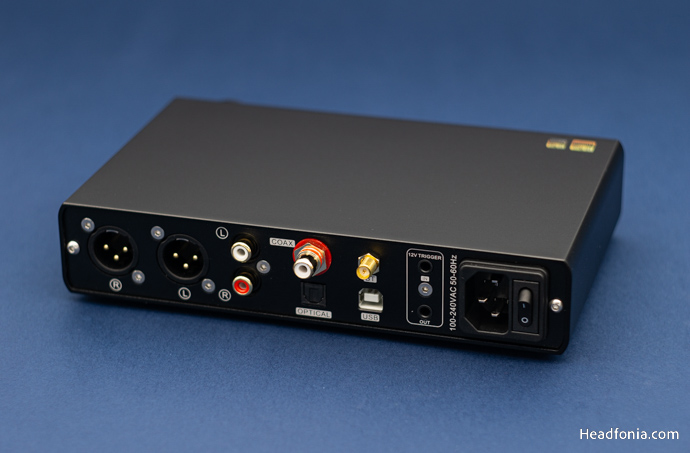
DAC Performance
Testing Equipment: Focal Alpha 80 Studio Reference Monitors, System-wide Audioquest Cables. The E70 is set to firmware V1.03 & Filter 3
For this test, I paired the E70 directly with my long-standing studio monitors via XLR and activated the pre-amp mode to control the volume.
From the moment I started listening to this duo, I was impressed by the E70. The eyebrow-raising accuracy, crispy clean resolution, and balanced signature with extended, uncolored delivery were the first few characteristics I noticed. The E70 is flat, meaning that it does not have any dips or peaks in its signature. In addition to being an accurate, fast, and technically competent DAC, the E70 conveys the sound signature of the equipment you pair it with, without saturating or coloring it.
The E70 can easily rival some of the pricier options such as the Loxjie D40 or the DA-ART Aurora in terms of technical capability. Let’s take PRaT as an example here. The E70 not only accurately portrays the instruments but also tries to convey the track to you realistically and effortlessly by not compromising instrument separation in congestion-prone tracks.
The fact that it does not saturate or colorize while doing this is a truly admirable technical achievement. To me, the E70 sounds dynamic, vivid, and exciting. The Alpha 80s can reach low and get loud, its ability to preserve the details even nearing the monitor’s distortion threshold is downright impressive.
Of course, E70 has a wide and deep stage when paired with equally capable equipment, you get a holographic stage with a proper 3-dimension feeling. The imaging is stellar, you get layers of instruments and when the mastering is good, it places you in the golden zone where each instrument is easy to spot, track and focus.
This is exactly what happened when I listened to the “Drum Boogie” by Benny Golson via Qobuz & Roon duo. The wind instruments feel natural, airy, and realistic. The E70 is in complete control, catching every little detail in the track, and reflecting as-is. For less than four hundred bucks, I honestly don’t know what’s next.
The review continues on Page Two, after the click HERE or by using the jump below.
Page 1: Topping E70 Desktop DAC, Packaging & Accessories, Design & Build Quality, Controls & UI, DAC Performance
Page 2: Topping L70 Desktop Amp, Packaging & Accessories, Design & Build Quality, Technology & Power, AMP Performance
Page 3: Topping E70 & L70 DAC & AMP Stack Performance, Comparison, Last Words





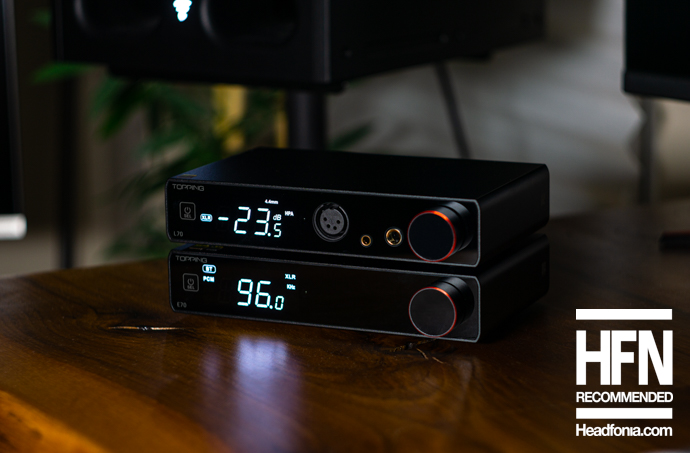
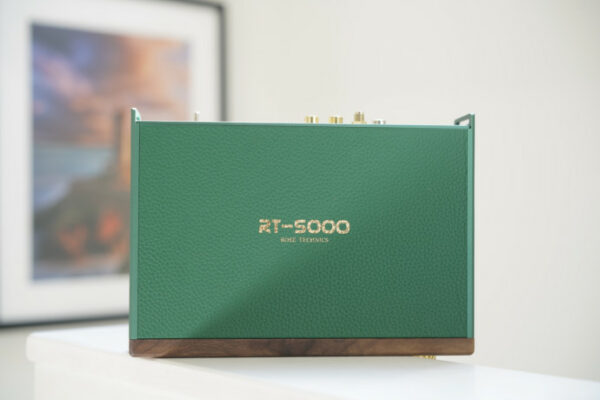
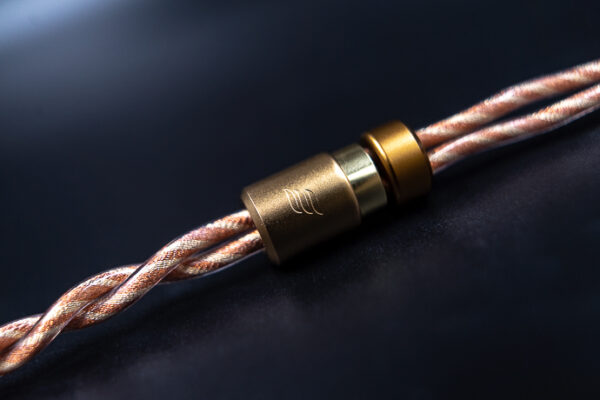
Mr Jamie Hutber
Thanks for the review guys!!
I just wise I could find a good DAC that also included a pre-amp for my microphone!! 🙁
Yagiz
Thanks for the kind words Jamie!
I know, right? Focusrite is just not cutting it after trying proper DACs
Pedro Gonzalez
Thanks for the review guys. How does this stack compare to the IFI One Signature and the IFI Zen Can Signature? Would you say equivalent?
Yagiz
I would say better.
Aaron
Great review. Just wish you detailed the L70’s controls and UI like you did for the E70. I currently use a Topping L30 which conveniently switches from headphone to pre-amp outputs using a toggle on the front panel. I love how easy it is to swap between my headphones and powered speakers and control their volume.
How easy is it to do this on the new L70? Does swapping outputs mute the non-active device? What hoops do you have to jump through in the absence of a simple toggle switch?
Yagiz
It is quite easy to control via the included remote. The transition is smooth, fast, seamless. I use it with multiple connections. Swapping takes a button. Going from SE to BAL mutes SE and vica-versa.
Alan
Thank you so much for the review as there is hardly anything on the L70. I was wondering if you know how this compares with the A90 Discrete? They seem extremely similar. Thanks.
Yagiz
Hello Alan, unfortunately I don’t own an A90.
I agree with you though, they seem similar.
Andrew Ballew
The E70 falls short of actual performance compared to the non-signature iFi ZEN DAC V2. The fact for $200 you get a DAC and headphone amp for $150 its a non brainer to pick the iFi. You want to really beat the E70 for only about 50 bucks more put together a ZEN DAC V2 and a iFi ZEN CAN. A combo that is difficult to beat without a lot more money invested.
Yes, I know the E70 measures well. I have measured it thoroughly myself, and have seen it hit 120db SINAD and get close to -128db SNR. The iFi can’t match that, but so what? The iFi still has a super wide -114db SNR, and if you actually take a look at its distortion on the spectrum analyzer, it is dominated by even order distortion. Which is often done on purpose when designing because to many ears is just sounds very good. See tubes for an example.
All that said, E70 is a fine DAC yes. Especially when using HQPlayer to oversample to DSD512, or if you can’t afford that, Roon itself has a very, very nice sounding oversampler that can do the same. If you are still wanting to go the Topping route though, save up another hundred bucks and get the newer E70V. It in a different class as far as actual sound is concerned (and does eek out over the E70 by nearly a couple db in SINAD).
dolph
They sounded great to me, and initially I liked the form factor, but the controls and volume adjustment just didn’t do it for me so I went for K9 Pro ESS for a combo solution.
I do recommend this stack, but as always personal preferences come to the fore. You’ll like these if you want a small form factor stack that’s better than the cheap stuff.